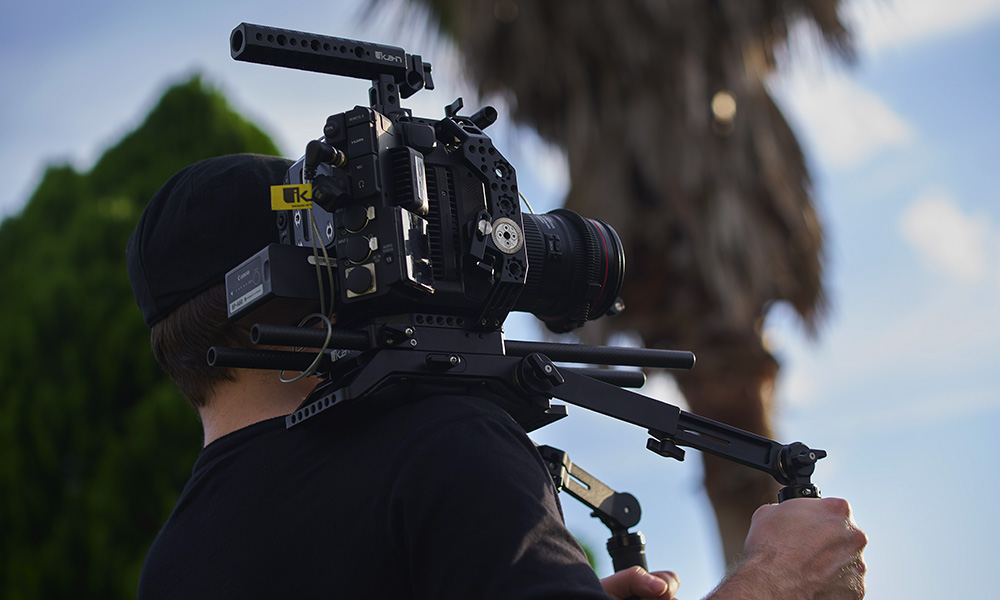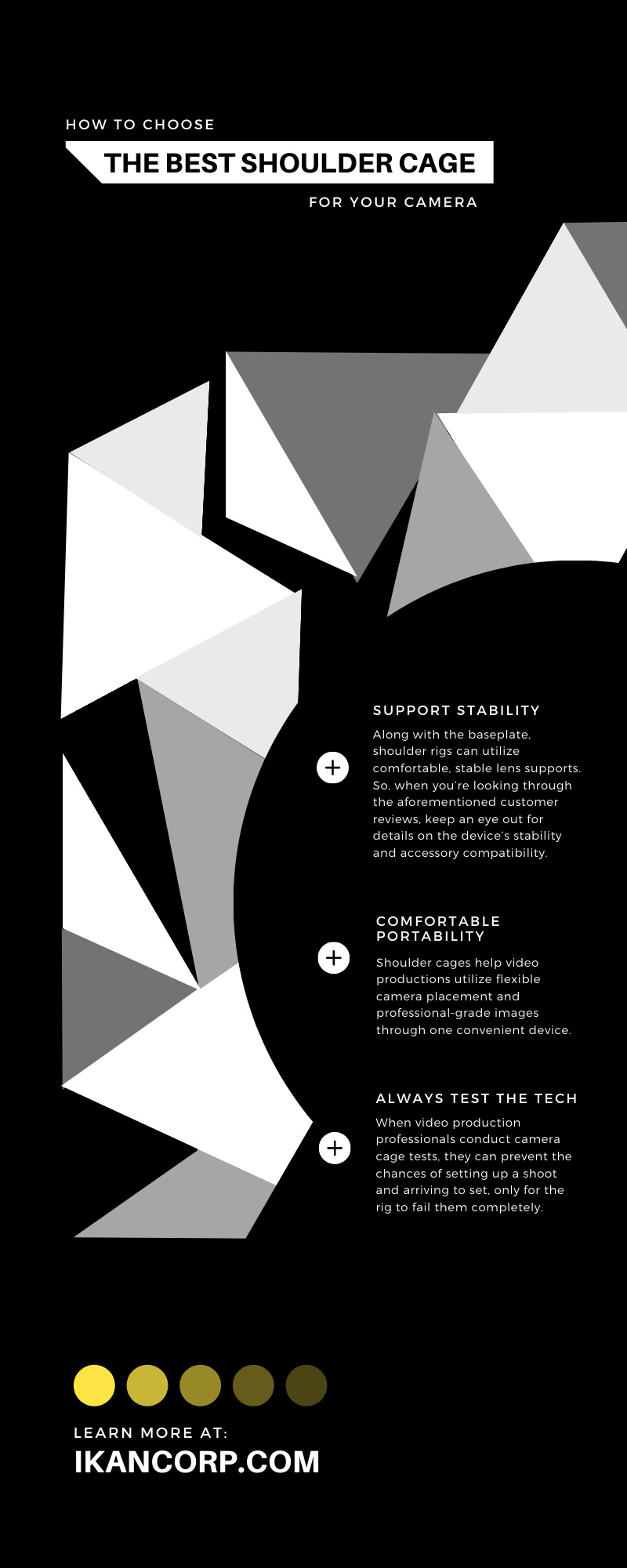
When video productions require immense camera movement without hindering picture quality, they can look to shoulder rigs for help. A high-quality tripod is great for capturing stable images, but its movement is more limited than a camera cage. The titular support device allows productions to move the camera around on stable platforms and convenient handgrips. Likewise, shoulder cages are highly customizable, helping them adapt to your unique needs on set.
That said, like all camera equipment, shoulder cages require careful consideration before purchase. But don’t worry—you don’t have to go through a college-level course to learn the ropes. Instead, before your next shoot, use the guide below to learn how to choose the best shoulder cage for your camera.
Consider Your Camera
One of the most important factors to consider when buying shoulder rigs and camera cages is the camera itself. Although this might sound obvious to some industry professionals, this is an easy detail to neglect. Unfortunately, certain rigs are better for some cameras than others.
Luckily, reliable retailers will be upfront with what cameras their cages are compatible with, so it shouldn’t require too much of a deep dive into the device specs to clarify. Ensuring your camera and its cage are compatible is a simple step that will help you avoid investing in the wrong equipment. If you’re struggling to learn what devices are compatible with any given rig, speak to the vendor or manufacturer to learn more. However, as you’ll learn below, there’s more to your shoulder rig that you’ll need to thoroughly explore.
Dig Deep Into Its Reputation
Any shoulder rig will have an identifiable reputation, whether good, bad, or somewhere between. So, as you do when looking for reliable contractors, do a background check on any camera cage. For example, look at the brand and find out if they’re a reputable name in the industry. Not only should you look for how many years they’ve been around, but you should also look at their product quality track record.
To begin, investigate customer reviews on certain camera cages, getting a feel for what others think about the product. Then, ensure you’re buying from reputable professional video equipment suppliers instead of shady vendors.
Suffice it to say that you should use this principle when buying any video production gear, from cameras to tripods and beyond. Another great tip for learning a cage’s reputation is asking other industry professionals. Sometimes, finding the perfect piece of tech is as easy as asking fellow experts what they use.
Support Stability
Various cage components prioritize camera support, as you can see from our library of shoulder rigs and camera cage kits and accessories. Along with the baseplate, shoulder rigs can utilize comfortable, stable lens supports. So, when you’re looking through the aforementioned customer reviews, keep an eye out for details on the device’s stability and accessory compatibility.
Of course, not every piece of video equipment has a review available, but it’s a good place to start, nonetheless. Additionally, make sure you can find a suitable lens support device if that’s an attachment that would benefit your production. After all, one of the main functions of shoulder cages is to support multiple attachments.
That said, you can match camera cages with more devices. For instance, if you want to pair the cage with a professional-grade follow focus system, it’s crucial to ensure the two are compatible. When buying accessories for your camera cage, remember to use the same investigative skills you ultimately used for buying the original cage. Although your cage might be high-quality, outfitting the device with lackluster attachments will not do your production any favors.
Comfortable Portability
Even before you know how to choose the best shoulder rig or camera cage, you’ll likely know that this equipment is great for portability. Sure, a camera pedestal provides the operator more movement than the average tripod. However, shoulder rigs provide more flexibility because, in many ways, the operator acts as the pedestal. Pedestals are great in the right applications, but the versatility and compact size of camera cages are sometimes what the day’s shoot calls for.
Plus, shoulder rigs help video productions utilize flexible camera placement and professional-grade images through one convenient device. So, dive into a shoulder cage’s specifications and find the weight.
Likewise, when you have the rig in your hands, remember to pay attention to how it moves while you’re mobile. For example, do components feel too loose? Does the cage feel comfortable while you move it? Answering these questions before committing to any shoulder cage will help you avoid buying lackluster gear. After all, camera cages should help your production, not hurt it.
Always Test the Tech
Even if your camera rig sounds great on paper, the ultimate test is how it functions in the field. So, when you finally have the camera cage in your hands, run some camera tests with it before bringing it along for your next project. That way, you can inspect for physical damage on components.
Furthermore, hands-on tests will bring functionality issues to light, so test the cage to the best of its abilities, utilizing everything it has to offer. When video production professionals conduct camera cage tests, they can prevent the chances of setting up a shoot and arriving to set, only for the rig to fail them completely. Now that you know the essentials of shoulder rigs, let’s dive into final thoughts.
Final Thoughts
As you can see, any camera rig purchase requires careful planning. The customization of shoulder rigs and cages is well worth utilizing, but if you don’t know the ropes, using the device to its full potential is challenging. It’s easy to buy the first rig you find, but it takes time to peruse the market carefully. That said, the extra time you spend scrutinizing every cage will pay off when you find the perfect match.
At the end of the day, these tips come down to considering your specific needs and finding cages from reputable places. In doing so, you can use these camera support tools to their fullest potential. If you consider all the right details to find a professional-grade camera rig for your set, using it to create high-quality content will be second nature.

